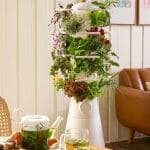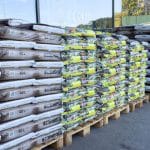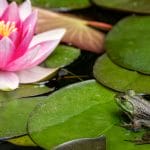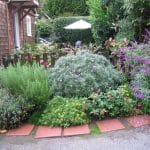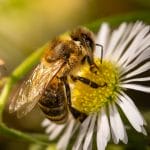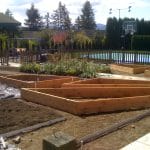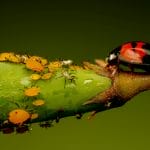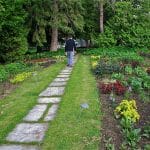How to Build a Backyard Pond That’s Deep and Safe Enough for Koi
How To's Ponds & Water Features
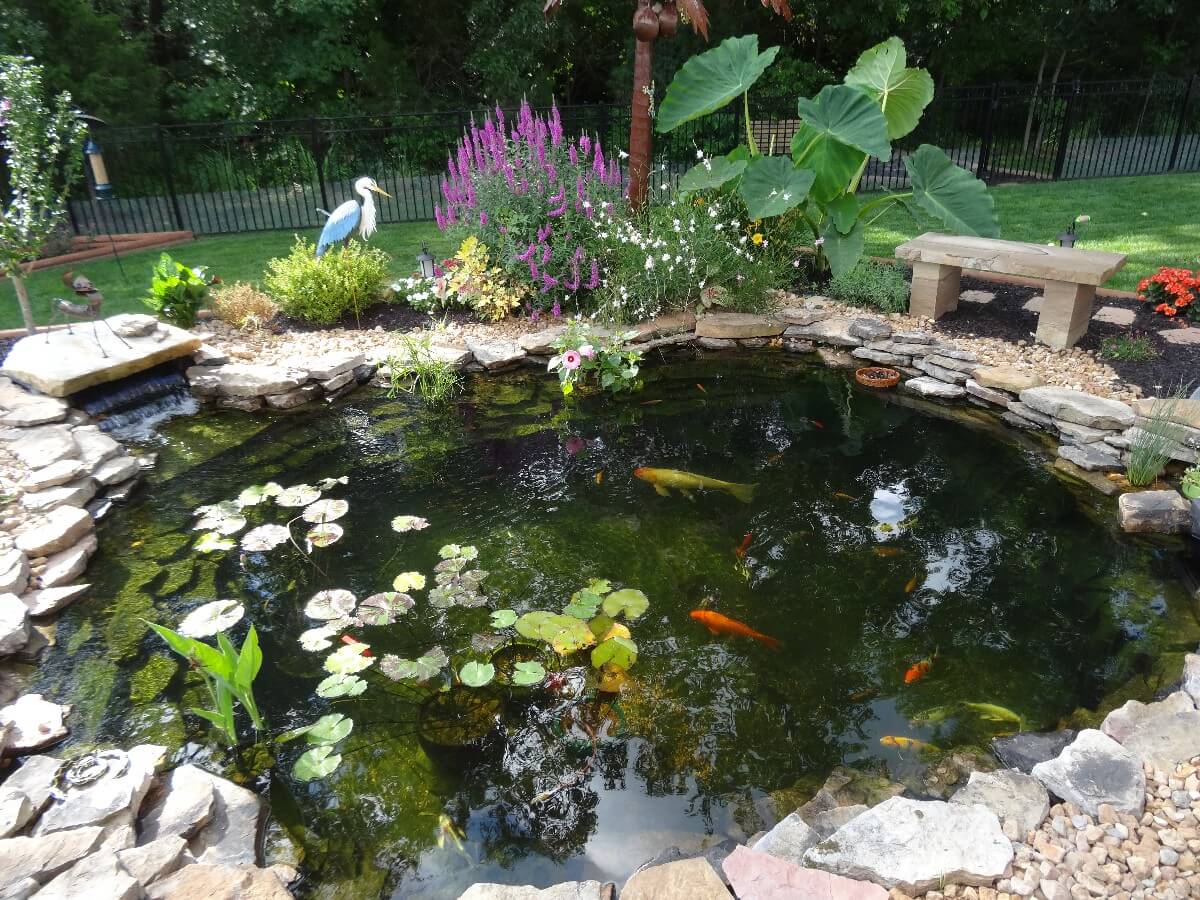
Garden Pond Inspiration: Ideas, Plants, and Tips to Get Started
I never set out to be a pond guy. I just wanted a quiet spot in the garden where I could sit and listen to something besides squirrels yelling at each other. But a few half-dug experiments and a lot of trial-and-error later, I found myself knee-deep (literally) in the kind of backyard ecosystem I didn’t even know I needed.
What started as “maybe I’ll add a little water feature” turned into a full-blown lesson in pond liners, pump sizes, algae wars, and learning how not to murder koi with love (or overfeeding).
If you’ve ever wondered what it’d be like to have a living water feature — not just a birdbath or bubbling rock, but a real pond — this post lays out your options, what to expect, and how to build something beautiful without needing a degree in landscaping.
Why build a pond in your garden?
Here’s the real reason: ponds change the rhythm of a space. They soften it. Add motion, sound, and calm. The water mirrors the sky, dragonflies patrol the surface like little helicopters, frogs sneak in overnight, and you suddenly have a wild little world happening right next to your parsley.
Plus, for gardeners like us — folks who avoid chemical shortcuts and want our spaces to actually function — ponds bring balance. They invite birds and beneficial bugs, offer natural pest control, and help anchor the ecosystem you’ve been trying to build in the soil.
And no, you don’t need a fancy backyard or a huge budget. There’s more than one way to add water to a garden, and they all have their own charm.
1. The Classic Garden Pond (Natural, Deep, and Fish-Ready)
This is the one you dig — by hand or with a rented mini-excavator. It sits low and blends into the landscape with stones, plants, and a sense that it’s always been there. If you want koi, this is where you start.
How deep should a pond be?
If you plan to add fish, especially koi, aim for a pond that’s at least 20 inches deep — but ideally closer to 3 feet. Why?
- Predator safety – Raccoons and herons can’t reach as easily if the water’s deep and there are no shallow ledges.
- Temperature regulation – Deeper ponds resist rapid heat and freeze cycles.
- Overwintering fish – At 2.5–3 feet, fish can stay near the bottom where temps stay stable, even in freezing weather.
In my first attempt, I stopped at 16 inches and added fish anyway. I found out the hard way what a raccoon can do in two inches of water. Round two? I added rock caves and built deeper. No casualties since.
What koi need to thrive
Koi aren’t goldfish with fancier colors. They’re large, long-lived, messy, and surprisingly personable once they settle in.
Popular koi varieties:
- Kohaku – White with bold red patches. Classic and clean.
- Sanke – White with red and black, like a koi Jackson Pollock.
- Showa – Mostly black with red and white, more dramatic than Sanke.
- Butterfly koi – Long, elegant fins. Beautiful but more delicate.
- Chagoi – Solid brown or bronze, super friendly, often the first to hand-feed.
- Platinum Ogon – Solid metallic white. They almost glow underwater.
How big do koi get?
Most folks don’t realize that koi can grow 2 to 3 feet long. You’ll need a pond that’s not only deep but wide and well-filtered. Ideally, 1,000+ gallons. If space is limited, consider smaller fish like:
- Shubunkin goldfish
- Rosie red minnows
- White cloud mountain fish (for smaller containers)
How to keep koi safe from raccoons and herons
Fish predators are clever. They know a free buffet when they see one. But there are ways to make your pond safer:
- ✅ Build steep sides instead of gradual slopes
- ✅ Include fish caves or tunnels using pots, bricks, or rock slabs
- ✅ Use floating plants like lilies or water hyacinth for overhead cover
- ✅ Motion-triggered sprinklers or lights scare off night visitors
- ✅ Decoy herons (used sparingly) help during migration
- ✅ Temporary netting during peak heron season works in a pinch
In my current pond, I stacked bricks under a wide flagstone to make a shaded fish tunnel. The koi disappear into it the second they hear wings overhead.
Feeding koi the right way
- Above 50°F: feed once or twice a day, just what they’ll eat in 2–3 minutes.
- Below 50°F: stop feeding entirely. Their metabolism slows and they can’t digest properly.
- Choose a quality floating pellet and supplement with occasional treats: watermelon bits, peas, or bloodworms.
I’ve made the mistake of feeding too late in the season — watching fish float belly-up is a rough lesson in water temp awareness. Now I keep a floating pond thermometer as a visual reminder.
2. The Container Pond (Small-Scale, No-Dig, Patio-Friendly)
This one’s great for patios, balconies, or side yards. I’ve made one in a galvanized trough, a whiskey barrel, even an old ceramic planter.
What you need:
- A container at least 20 inches deep (if adding fish)
- Pond liner or sealant (if it leaks)
- A small solar pump or bubbler
- A few bricks for plant height
- Floating and marginal plants
- 1–2 small goldfish (optional — only if the water volume allows)
These ponds heat up and cool down fast, so fish need to come indoors for winter if you’re in a cold zone.
Setup time? Half a day. Add another hour if you need to run electric or seal a leaky pot.
3. The Wildlife Bog Bowl (Shallow, Mucky, Full of Life)
If you’ve got a low spot in the yard or just love marshy plants, try a bog pond. These don’t usually include fish, but they’re magnets for frogs, birds, and weird wonderful insects.
Dig about 20 inches deep in one section, lay a liner, add compost/gravel, and fill with water-retentive plants. No filter needed. No pump unless you want a little trickle.
Good bog plants:
- Marsh marigold
- Pickerel rush
- Creeping jenny
- Dwarf iris
- Cardinal flower
I built one by accident once after digging a failed raised bed. Turns out, it’s the best spot in the yard for frog friendly spotting.
🧰 Full Equipment List for Building a Backyard Pond That Actually Works
| Item | Purpose | Tips, Brands & Real-Life Notes |
| EPDM Pond Liner | Holds water securely, flexible and long-lasting | Go with Firestone 45 mil EPDM or PondGard — it’s tough, UV-resistant, and stays flexible even in winter. Avoid PVC liners — they crack and wear out faster. Measure your hole with depth + width + length and add 2–3 feet overlap. |
| Underlayment | Cushions and protects the liner from roots or rocks | Use commercial underlayment like Aquascape Non-Woven Geotextile, or just old carpet scraps or heavy felt. It’s insurance for your liner — not optional if you’re digging into rocky soil. |
| Pump & Tubing | Keeps water moving, oxygenated, and healthier | Choose a submersible pump rated for your pond volume (gallons per hour = total pond gallons x 1.5). Great brands: TetraPond, Laguna Max-Flo, or Aquascape EcoWave. Use kink-free tubing to save headaches. |
| Pond Filter (Pressurized or Box Style) | Cleans debris, fish waste, and algae from the water | For koi or large fish, you’ll want a bio-filter or UV filter combo. Try OASE BioSmart, Tetra Bio-Active, or Laguna Pressure-Flo. DIY setups with plant-based filters can work for lighter fish loads. |
| De-icer or Bubbler | Keeps a hole open in the ice for oxygen exchange during winter | TetraPond De-Icer (300 watts) is reliable and floats in place. Pair it with a small aerator like Hakko or Aquascape Pro Air to keep gas exchange going in freezing weather. |
| Pond Thermometer | Monitors water temps to know when to stop feeding | Float one right in the pond — any aquatic-safe floating thermometer works. Lifegard and Laguna both make solid versions. Stop feeding koi around 50°F. |
| Rocks & Edging Stone | Covers liner edges, creates ledges, and gives birds/frogs landing spots | Use smooth river rock, flagstone, or fieldstone. Go heavy enough that raccoons can’t toss them. Stack in layers and leave pockets or “steps” for wildlife access. Avoid sharp gravel directly on the liner. |
| Pond Plants (Floating, Marginal, Submerged) | Filter nutrients, provide shade and oxygen, and create hiding spots | Floaters: Water lettuce, hyacinth, or duckweed. Marginals: Pickerel rush, creeping jenny, marsh marigold. Submerged: Hornwort, anacharis, or parrot feather. Check zone compatibility and avoid invasive species. |
| Netting (Optional) | Keeps leaves and predators out, especially in fall or during heron season | For leaf netting: use Pondmaster Pond Netting Kit or Atlantic Water Gardens Heavy-Duty Net. For herons: UV-stabilized netting over a PVC frame works well — but take it down when it’s not needed to keep your pond view clear. |
| Fish Cave Materials | Give koi or goldfish places to hide from predators or escape the heat | Use large flat rocks on bricks, ceramic pots turned on their side, or 6″–8″ diameter PVC pipes buried in gravel. Hide them in the deeper section so fish can duck in and out when something swoops overhead. |
| Solar Fountain or Bubbler (Optional for Small Ponds) | Adds oxygen, keeps mosquitoes away, and creates peaceful sound | For container or patio ponds, a solar-powered bubbler like Solatec or Sunnydaze works great. Not enough for koi, but perfect for goldfish or mosquito control. |
| Water Conditioner / Dechlorinator | Makes tap water safe for fish by neutralizing chlorine or chloramines | If you’re filling with city water, use a conditioner like API Pond Stress Coat or Seachem Pond Prime. Always treat before adding fish. |
| Test Kit | Lets you monitor ammonia, pH, nitrates, and nitrites | Grab a master liquid test kit like API Pond Master Test Kit — essential if you’re adding fish or troubleshooting water problems. Strips are okay for rough checks, but liquids are more accurate. |
| Lighting (Optional but Worth It) | Adds evening visibility, atmosphere, and helps keep predators visible | Try submersible LED lights like Aquascape Garden and Pond Light Kit or solar uplighting around the pond edge. Looks beautiful and lets you see who’s visiting after dark. |
How long will this take?
For a full in-ground pond:
- Digging – 1–2 days (solo) or a weekend with help
- Liner + plumbing – 1 day
- Edge finishing + planting – 1–2 days
- Tweaking things after it’s running – lifelong hobby 😄
Call in a friend for help with liner placement, rock hauling, or pump testing. A second set of hands saves a ton of time (and your back).
Backyard Pond FAQ
Answers from someone who’s made the mistakes so you don’t have to
Q: How deep should a koi pond be?
A: Deeper than you want to dig — but totally worth it. The sweet spot is 30 to 36 inches deep, especially if you live somewhere with cold winters or nosy raccoons. That kind of depth gives your koi a buffer zone they can actually survive in when everything else freezes or gets too hot.
At 3 feet deep, you’re giving them room to hide from predators, stay insulated during winter, and feel like they actually belong there — not like they’re just visiting your backyard puddle. Trust me, digging a little more now saves a lot of heartbreak later.
Q: Do koi really get that big?
A: Yep. That cute little 6-incher you bring home could hit 2 to 3 feet long in just a few years if you give it space and clean water. Some can even live for decades — I’ve read about koi passing the 50-year mark. One koi in Japan reportedly lived to be 200, but I won’t be around to fact-check that one.
Point is, koi aren’t “starter” fish. They’re more like long-term garden roommates. Build your pond with their full-grown size in mind, or you’ll end up needing to renovate faster than you think.
Q: Can I keep koi in a patio pond or small container?
A: Honestly? Not for long. You can, but they won’t thrive. It’s like trying to raise goats in an apartment. Koi need room, depth, and a lot of oxygen. Most container ponds are just too shallow and heat up too fast — not to mention they get nasty quick without filtration.
If you’re working with a smaller setup, try goldfish like shubunkins, or little guys like rosy reds or white clouds. They’re tough, colorful, and a lot more forgiving. Plus, they won’t outgrow your pond in six months.
Q: Do I need a heater for winter?
A: Not unless you’re trying to run a spa for fish. But you do need to keep a hole open in the ice. That’s non-negotiable.
If the surface freezes solid, all the gunk and gas underneath gets trapped — and your koi basically suffocate. I use a floating de-icer and a bubbler to keep just enough movement at the surface. Works great, doesn’t mess with the fish’s winter rhythm, and costs a lot less than a full heater.
Q: What do I feed koi, and when?
A: In warm weather (above 50°F), feed once or twice a day — just what they’ll eat in a few minutes. They’ll let you know when they’re full. And when the water gets cold? Stop feeding altogether. Their digestion slows down and leftover food just fouls up the pond.
I keep a floating thermometer in the pond and stop feeding around 50°F. They don’t need the calories, and trying to keep feeding them “just in case” can do more harm than good.
For treats, mine go crazy for peas, watermelon bits, and the occasional bloodworm snack. Just don’t overdo it — I’ve had to do a full water change after one well-meaning overfeeding.
Q: How do I winterize my pond so I don’t lose fish or wake up to green goo?
A: Think of it like putting the garden to bed. Nothing fancy, just smart prep:
- Net out the leaves before they sink and rot
- Cut back pond plants so they don’t decompose in the water
- Clean your filter or shut it down if you’re pausing it for the season
- Install your de-icer or aerator before it freezes
- Stop feeding koi once temps drop
- Make sure they’ve got shelter — rock caves, tunnels, deep water zones
They’ll hang out near the bottom in torpor all winter — it’s like hibernation, but wetter. You just have to make sure the water stays clean and breathable.
Q: How big does a pond need to be for koi to live long-term?
A: If you want your koi to grow well and stay healthy, aim for at least 250 gallons per fish. So a pond for just three koi should be around 750–1,000 gallons minimum, with 3 feet of depth, good filtration, and plenty of plants.
If that sounds like a lot, it is. But you’re not just building a water feature — you’re building a whole environment. Once it’s in and settled, it becomes the most peaceful, dynamic, and satisfying part of the yard.
Honestly, I spend more time sitting by the pond now than I do in the house.
Q: How do I keep predators like raccoons and herons from eating my fish?
A: The short answer? Build smart, and give your fish places to disappear. I didn’t take this seriously at first — figured the pond was deep enough, and raccoons would stick to trash cans. Then I came out one morning and found nothing but scales and stirred-up gravel. Brutal.
Here’s what actually works (learned the hard way):
- Depth matters – Build your pond at least 30 to 36 inches deep so raccoons can’t wade in and herons can’t stand at the edge and jab.
- No shallow beach zones – Tempting for design, but predators love them. Make the drop-off sharp instead.
- Fish caves – I use flat rocks balanced on bricks, terra cotta pots on their side, or even pieces of PVC pipe buried in the gravel. The fish vanish into these when danger’s nearby.
- Floating plant cover – Water lilies, hyacinths, or even duckweed give overhead protection and keep fish from being so visible.
- Motion-activated lights or sprinklers – Set one up nearby. It only takes a single spook for a raccoon or heron to start thinking twice.
- Decoy herons (if you’re quick about it) – They can work, but only if you move them around. Real herons know the fake ones don’t flinch.
It’s not about making your pond predator-proof like Fort Knox — it’s about tipping the odds back in your fish’s favor. Between the depth, the plant cover, and a couple of hiding spots, mine haven’t had a single “midnight visitor incident” since.
Share this post
Table of Contents
- Why build a pond in your garden?
- 1. The Classic Garden Pond (Natural, Deep, and Fish-Ready)
- How deep should a pond be?
- What koi need to thrive
- Popular koi varieties:
- How big do koi get?
- How to keep koi safe from raccoons and herons
- Feeding koi the right way
- 2. The Container Pond (Small-Scale, No-Dig, Patio-Friendly)
- What you need:
- 3. The Wildlife Bog Bowl (Shallow, Mucky, Full of Life)
- 🧰 Full Equipment List for Building a Backyard Pond That Actually Works
- Backyard Pond FAQ
All categories
More From The Garden
Disclosure: This post may contain affiliate links. That means if you click and buy, The Bright Garden may earn a small commission, at no extra cost to you. We only recommend products we’ve vetted and believe will benefit our readers.

